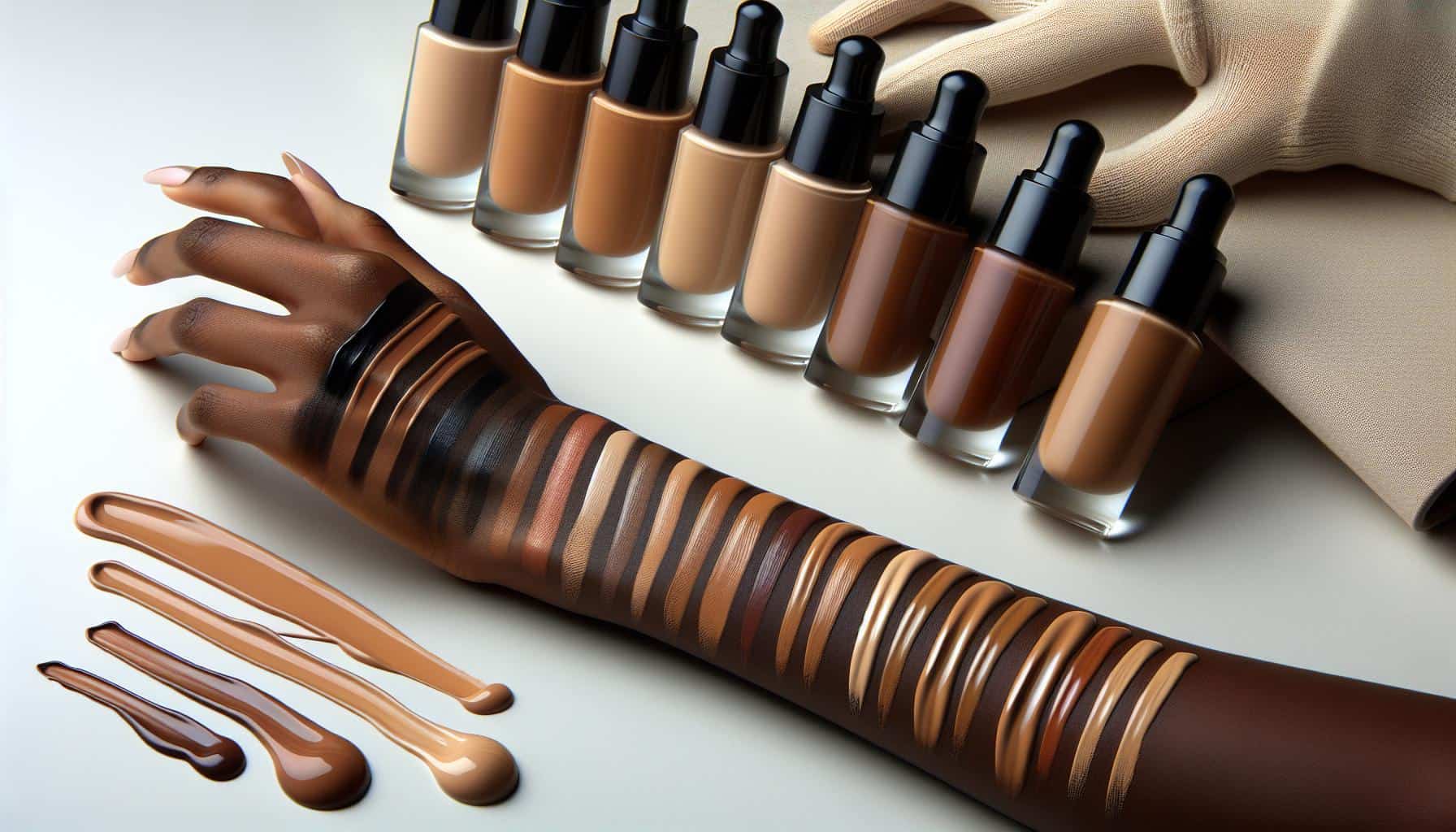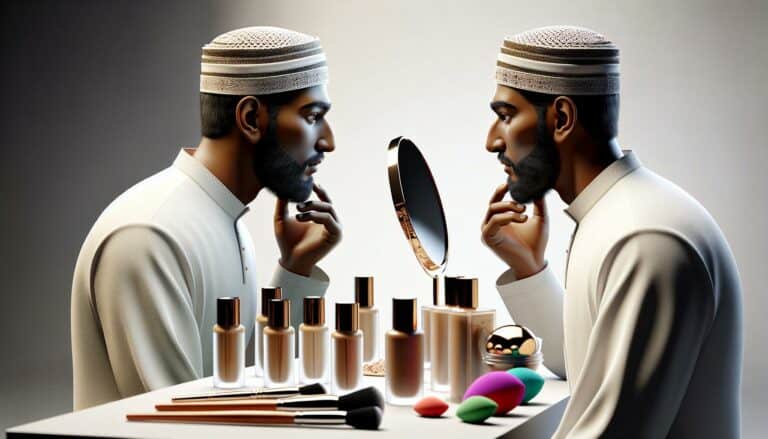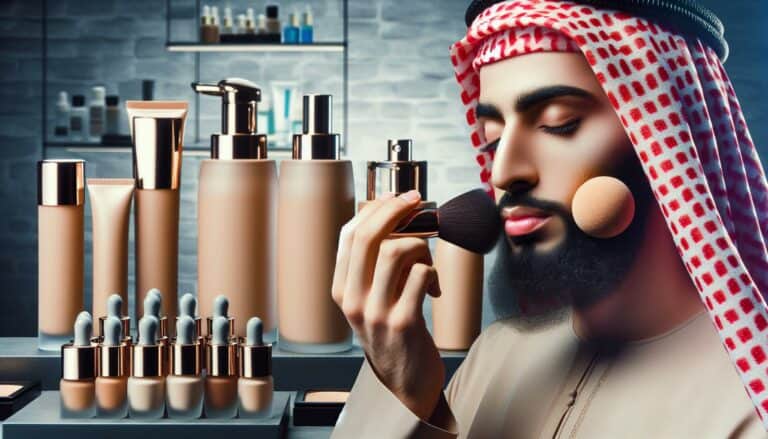Find Your Match: How to Choose the Perfect Foundation
Understanding Your Skin Type
Identifying your skin type is a cornerstone in the journey to finding the perfect foundation match. Your skin can fall into one of several categories, each with its own set of characteristics.
- Normal: Your skin remains balanced, not too oily or dry.
- Oily: You notice a shine on your face, and might struggle with acne.
- Dry: Your skin often feels tight and might show flaking.
- Combination: Some areas (like the T-zone) are oily, while others are dry.
- Sensitive: Your skin may react to certain products with redness or irritation.
Understanding these types will significantly influence your foundation choice, ensuring a look that complements rather than contradicts your natural skin.
| Skin Type | Characteristics |
|---|---|
| Normal | Balanced moisture, few imperfections |
| Oily | Shiny appearance, prone to breakouts |
| Dry | Rough texture, visible lines |
| Combination | Oily T-zone, dry cheeks |
| Sensitive | Redness, itching, burning after product use |
Expert Tip: “Always match your foundation to your skin type, not just your skin tone, for the most natural look.”
Remember, the right foundation for oily skin might be a mattifying formula, while dry skin benefits from hydrating foundations. For sensitive skin, look for hypoallergenic formulas to minimize irritation.
In essence, the knowledge of your skin’s specific needs will guide you to the foundation that not only matches your color but also enhances your overall skin health.
Exploring Different Formulas and Finishes

Once you’ve got a handle on your skin type, it’s time to dive into the wide world of foundation formulas and finishes. The right combination can make you feel like you’re wearing a second skin, perfectly matching your natural texture and tone.
Foundation Formulas
Foundations come in various forms, each offering unique benefits. Here’s a quick breakdown:
| Form | Best for | Coverage |
|---|---|---|
| Liquid | All skin types | Buildable |
| Powder | Oily, combination | Light to full |
| Cream | Dry, mature | Full |
| Stick | Normal, combination, oily | Full |
| Tinted Moisturizer | All, especially dry | Sheer |
Liquid foundations are incredibly versatile and can cater to anyone, making them a go-to for beginners and experts alike. Powder foundations are great for controlling shine, while cream bases offer intense hydration and coverage, ideal for dry or mature skin. Stick foundations stand out for their convenience and ease of application, and tinted moisturizers offer a light, natural coverage for everyday wear.
Finishes
The finish of your foundation can dramatically affect the final look. Here’s what you need to know:
- Matte: Best for oily skin, it reduces shine and offers a clean, polished appearance.
- Dewy: Ideal for dry or mature skin, it adds a luminous, healthy glow.
- Natural: Suitable for all skin types, it strikes a balance between matte and dewy.
Dewy finishes can revitalize dull, dry skin, bringing a youthful vibrance back to your complexion. Conversely, a matte finish might be your holy grail if you’re looking to combat excess oil throughout the day.
In essence, pairing the right formula with the desired finish is key to achieving a flawless foundation application. By understanding your skin’s needs and the effect you wish to achieve, you can narrow down your options and find the foundation that feels just right.
Finding Your Perfect Shade
Once you’ve determined your skin type and the best foundation formula for your needs, the next step is zeroing in on your perfect shade. This can seem daunting, but with a few tips, you’ll find your match in no time.
Know Your Undertone
Your skin’s undertone is the key to picking a foundation that blends seamlessly. There are three main undertones: cool, warm, and neutral.
- Cool undertones have hints of blue or pink.
- Warm undertones display yellow, peach, or golden hues.
- Neutral undertones are a mix of both cool and warm.
A simple way to identify your undertone is to look at the veins on your wrist in natural light.
- If your veins appear blue or purple, you likely have cool undertones.
- Green veins suggest warm undertones.
- If it’s hard to say, you might be neutral.
Swatch Test
When testing foundation shades, always swatch on your jawline to see how it looks against your face and neck. This prevents a mismatch and ensures a natural transition. Test three shades at a time, and go with the one that disappears into your skin.
Understand Lighting
Lighting can drastically change how a foundation looks. Always check your foundation shade in natural light to ensure it matches well.
“The right foundation shade should be virtually invisible and feel like a second skin.”
| Undertone | Vein Color | Foundation Hint |
|---|---|---|
| Cool | Blue/Purple | Pink, Reddish |
| Warm | Green | Yellow, Peachy |
| Neutral | Hard to Say | Balanced Mix |
Remember, finding your perfect shade might require some trial and error, but knowing your undertone and how to properly test shades can simplify the process significantly.
Discovering Your Undertones
Understanding your undertones is crucial in finding the right foundation. While your skin tone can change with sun exposure, your undertones remain consistent, affecting how colors look on you. There are three main types: warm, cool, and neutral.
Know Your Undertones
- Warm undertones often have a golden, peachy, or yellow cast.
- Cool undertones feature pink, red, or bluish hints.
- Neutral is a mix of both, without a dominant undertone.
To determine yours, consider the following methods:
Jewelry Test: If silver jewelry enhances your skin more than gold, you likely lean towards cool undertones. Gold jewelry favoring your complexion suggests warm undertones. If both suit you equally well, you’re probably neutral.
Vein Test: Look at the veins on your wrist in natural light. If they appear blue or purple, you have cool undertones. Green-looking veins indicate warm undertones. A mix? You’re neutral.
Pro Tip: “Always test in natural light, as artificial lighting can alter how colors truly look on your skin.”
| Undertone | Ideal Foundation Hue |
|---|---|
| Warm | Golden or Yellow |
| Cool | Pink or Rosy |
| Neutral | Balanced Mix |
Matching your undertone to your foundation ensures a seamless blend that looks like your second skin rather than a mismatched mask. Armed with the knowledge of your undertones and the right shade, you’ll find the perfect foundation that compliments your natural beauty perfectly.
Achieving a Flawless Finish
Once you’ve found your perfect match in terms of shade and undertone, mastering the application technique is key to achieving a flawless finish. Foundation isn’t just about color matching; it’s about how it’s applied to your skin. There are a couple of approaches depending on the coverage you desire and the type of foundation you’re using.
For light coverage, a beauty sponge or fingertips can create a natural look. For more full coverage, using a brush can help you achieve a more polished look. Remember, the way you apply your foundation can make a significant difference in the final outcome.
Here’s a simple guide to help you determine which tool to use for your desired finish:
| Tool | Coverage Level | Finish |
|---|---|---|
| Beauty Sponge | Light to Medium | Natural, Dewy |
| Makeup Brush | Medium to Full | Polished, Matte |
| Fingertips | Light | Sheer, Natural |
“The right tool can elevate your foundation from good to flawless.”
Additionally, setting your foundation with a powder suited for your skin type can prolong its wear and keep your skin looking fresh. For oily skin types, a mattifying powder will help control shine, while dry skin can benefit from a hydrating or illuminating setting powder.
Prepping your skin properly before application is also critical. Ensure your skin is clean, moisturized, and primed to provide the best canvas for your foundation. Skincare and preparation play a significant role in how well your makeup will sit and stay on your face throughout the day.
By paying attention to these details, you’ll be able to achieve a foundation look that not only enhances your natural beauty but also lasts longer and looks impeccable.
Conclusion
Choosing the right foundation is essential for creating a flawless makeup look. You’ve learned about understanding your skin type, matching your undertone, and the significance of application techniques. But, knowing the right foundation for you goes beyond just these steps.
Here’s a quick guide to help you navigate the journey:
- Understand your skin’s needs: Your skin type can change over time, so it’s important to stay attuned to its current condition.
- Test before you buy: Always swatch foundations on your jawline and check the color in natural light.
- Seek professional help: If you’re still unsure, a makeup professional can offer personalized advice.
Remember, finding the perfect foundation is a trial and error process. Be patient and open to experimenting.
“The best foundation is the one that disappears into your skin, enhancing your natural beauty.”
| Factor | Importance |
|---|---|
| Skin Type | Crucial |
| Undertone | Essential |
| Coverage | Based on Preference |
| Finish | Personal Choice |
Swatching different formulas and shades is critical for finding the one that feels like a second skin. Whether you prefer a matte, dewy, or natural finish, there’s a foundation out there that’s perfect for you.
In the end, your foundation should boost your confidence and make you feel beautiful. By focusing on these key elements, you’re well on your way to uncovering the foundation that not only looks great but feels amazing too.








